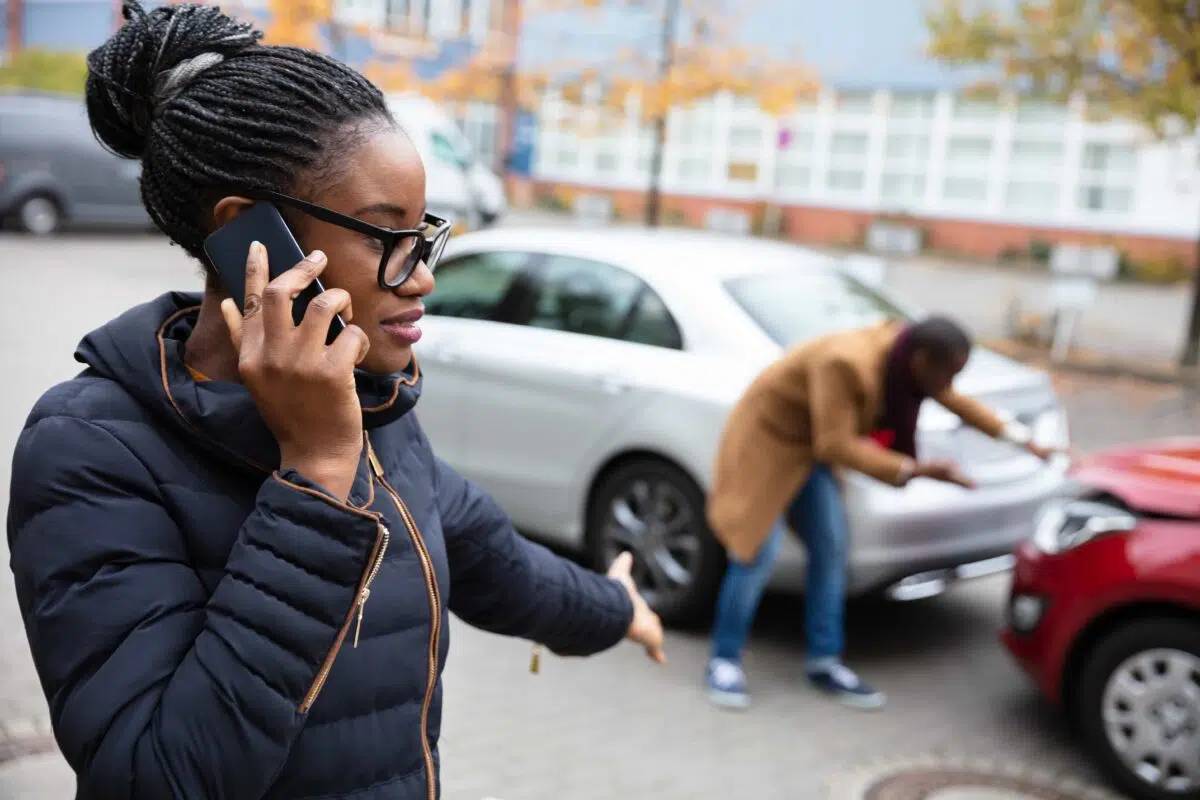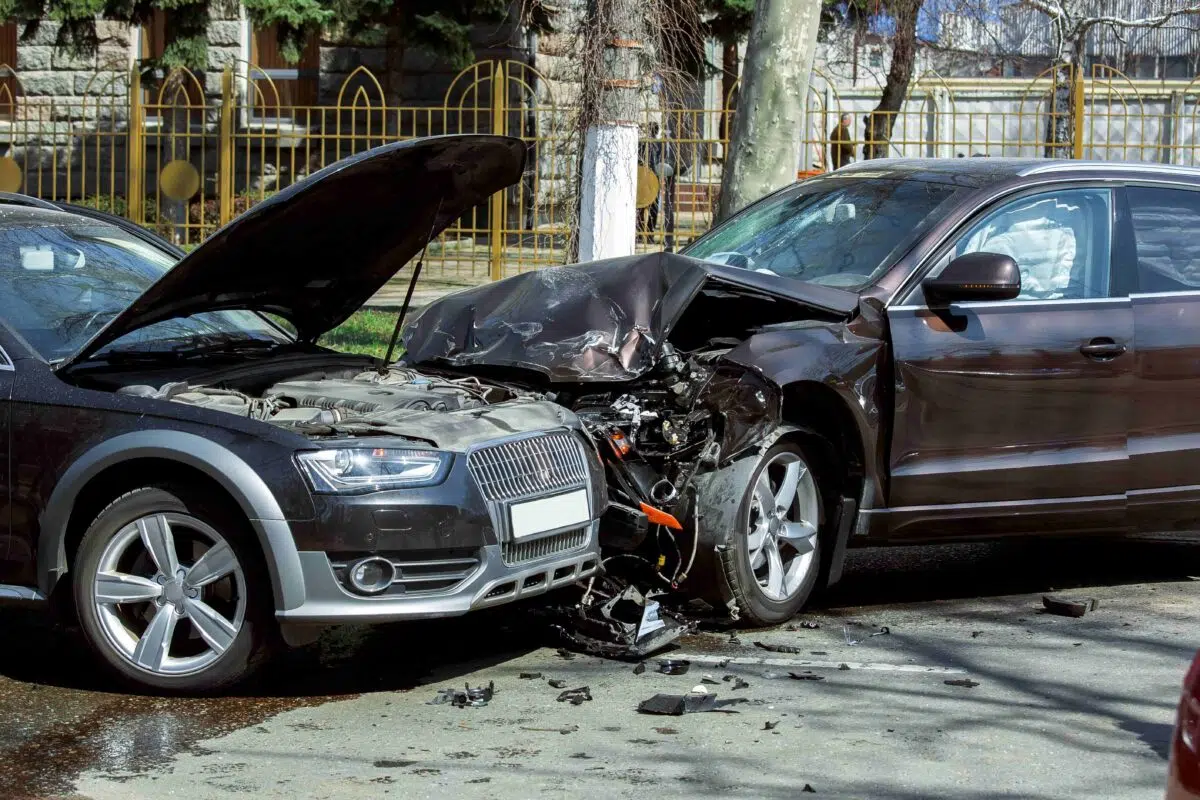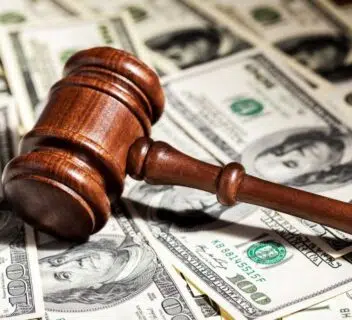Injured in a T-Bone Accident? Know Your Legal Rights
A car crash is always a shocking experience, but few collisions are as sudden—or as dangerous—as a t- bone accident, also known as a side impact collision. One moment you’re driving through an intersection, and the next, another vehicle slams into the side of your car with terrifying force.
Most t-bone collisions are broadside accidents that typically occur at intersections due to failure to yield the right of way, running red lights, or making unsafe left turns. These side-impact collisions often result in serious injuries, extensive vehicle damage, and a host of legal questions about what happens next.
If you or a loved one has been injured in a t-bone car accident, as an accident victim, it’s important to know your rights. You may be entitled to compensation for medical expenses, lost wages, pain and suffering, and more. But getting that compensation isn’t automatic—it often depends on proving who was at fault and navigating complex insurance issues.
In this guide, we’ll break down what you need to know about t-bone accident claims: how they happen, who can be held liable, what your legal options are, and how to protect yourself moving forward.
What Is a T-Bone Accident?
A t-bone accident or t-bone collision, also called a side-impact or broadside collision, occurs when the front of one vehicle crashes directly into the side of another vehicle—forming a “T” shape. In this scenario, the vehicle struck receives the side impact from the striking vehicle.
These crashes usually happen at intersections where one vehicle fails to yield the right-of-way, runs a red light, or misjudges the speed or distance of oncoming traffic. T-bones are a type of side-impact collision that occurs mainly at intersections.
T-bone accidents happen most often at intersections due to failure to yield or running red lights.
Unlike rear-end or front-end collisions, t-bone accidentsare especially dangerous because there’s less structural protection on the sides of a vehicle.
Side doors and panels often don’t absorb impact as well as bumpers or engine compartments, which means occupants—especially those seated closest to the impact—are more likely to suffer serious injuries.
Common Injuries in T-Bone Accidents:
- Broken ribs, hips, or limbs
- Back injuries
- Spinal cord damage
- Chest injuries
- Head injuries
- Traumatic brain injuries (TBI)
- Spinal cord injuries
- Internal bleeding
- Whiplash and neck injuries
- Severe bruising or lacerations
Injuries from a t-bone accident can range from minor injuries to severe trauma, including damage to internal organs and chronic pain. The severity of a t-bone accident makes it essential to understand how legal liability works—and how to build a strong claim for compensation.
What Should I Do Immediately After a T-Bone Accident?

If you’re involved in a t-bone car accident, your first priority should always be safety. Move yourself and any passengers to a secure location away from oncoming traffic, if possible, to prevent further harm.
Once you’re safe, call 911 to report the car accident—even if the t-bone crash appears minor. Having a police report on file is crucial for determining fault and can be a key piece of evidence in any personal injury claim.
Next, check for severe injuries among all vehicle occupants. T-bone collisions often cause traumatic brain injuries, spinal cord injuries, broken bones, and other significant injuries. If anyone is hurt, do not attempt to move them unless absolutely necessary; wait for emergency responders to provide medical treatment.
Even if you feel fine, seek medical attention as soon as possible, as some injuries—like brain injuries or internal trauma—may not be immediately apparent.
Exchange information with the other driver, including names, contact details, and insurance company information. Be sure to document the accident scene by taking photos of the vehicles involved, any visible injuries, and the surrounding area.
This evidence can be invaluable when establishing fault and supporting your personal injury claim.
If there are witnesses to the t-bone accident, ask for their contact information and, if they’re willing, brief witness statements about what they saw. Independent accounts can help clarify how the bone accident happened and strengthen your case.
Avoid discussing the details of the accident or admitting fault to the other driver or anyone else at the scene. Anything you say could be used by insurance companies to dispute your claim.
Once you’ve received medical attention and the police report has been filed, notify your insurance company about the t-bone accident. Provide them with all relevant information and follow their instructions for filing a claim.
Finally, consider reaching out to a personal injury attorney experienced in t-bone accidents. An attorney can help you navigate the complexities of insurance claims, gather the necessary documentation, and fight for compensation for your medical expenses, lost wages, and pain and suffering. They can also assist in determining fault and building a strong case on your behalf.
Remember, t-bone car accidents can result in life-altering injuries. Promptly seeking medical attention and legal guidance is essential to protect your health, your finances, and your legal rights.
How Do I Know Whether I Have an Actionable T-Bone Accident Claim Under the Law?
To bring a successful personal injury claim, you must show that the other driver (or another party) acted negligently and that their actions directly caused your injuries. You must also prove fault by gathering evidence to establish liability. This involves proving four key legal elements:
Negligence: The law compares the defendant’s actions to what a reasonable person would have done in similar circumstances to determine if there was a breach of duty.
Causation: You must show that the accident was caused by the other driver’s actions, directly leading to your injuries.
1. Duty of Care
Every driver on the road owes a duty of care to others. This means driving safely, obeying traffic laws, including traffic signals and stop signs, and avoiding actions that put others at risk.
In a t-bone accident, this often occurs when a driver fails to yield or obey traffic signals or stop signs, such as running a red light or speeding through an intersection.
2. Breach of Duty
You must show that the other driver breached their duty. This might mean they didn’t check for oncoming traffic, ignored a traffic signal, made a dangerous left turn, ran red lights, or failed to stop in time.
3. Causation
There must be a direct link between the breach of duty and the accident that caused your injuries. In other words, you must prove that the other driver’s actions—not something else—caused the crash.
4. Damages
You must have suffered actual losses, such as medical bills, missed work, or pain and suffering. Without damages, there is no legal claim—even if the other driver was clearly at fault.
What Is Negligence Per Se, and How Might It Apply to My Case?
Negligence per se is a legal shortcut that may apply int-bone car accident cases. Normally, to prove negligence, you must show that the other party acted unreasonably.
But with negligence per se, if the driver violated a traffic law designed to protect people (like running a red light or failing to yield), that violation automatically counts as negligence.
Example:
If another driver ran a stop sign and hit the side of your car, that traffic violation could be enough to establish fault without needing further debate about what a “reasonable driver” would have done.
Negligence per se makes it easier for injured victims to establish liability—and potentially obtain compensation more quickly.
How Is Fault Determined?
Determining fault in a t-bone accident can be complicated. These crashes often involve conflicting accounts of who had the right of way, which driver entered the intersection first, or whether a traffic signal was obeyed.
Sometimes, fault lies with one driver due to negligence, such as running a red light or failing to yield. In other cases, both drivers may share responsibility depending on their actions at the intersection.
Attorneys, insurance companies, and sometimes the courts will look at:
- Police reports and traffic citations
- Accident report
- Medical records
- Video footage (from dashcams or traffic cameras)
- Witness statements
- Vehicle damage and skid marks
- Traffic signal timing data
The actions of other drivers at the scene, such as obeying traffic signals or responding to the accident, can also play a crucial role in determining fault and ensuring safety.
Even when the fault seems clear, insurance companies may dispute liability to reduce their payout. That’s why having legal representation can be critical when pursuing a claim after a t-bone accident.
What Happens If I’m Partially at Fault for My T-Bone Accident Injuries?
Some states follow different legal doctrines that allow or restrict recovery depending on your share of fault. Here’s a breakdown of the three main systems used in the U.S.:
1. Pure Comparative Negligence
- You can recover compensation even if you’re 99% at fault.
- Your damages are reduced by your percentage of fault.
Example: If your total damages are $100,000 and you’re 40% at fault, you would receive $60,000.
2. Modified Comparative Negligence
- You can recover damages only if you’re less than 50% (or 51%, depending on the state) at fault.
- If your share of fault exceeds the threshold, you recover nothing.
Example: If you’re 45% at fault, you can still recover 55% of your damages. If you’re 55% at fault, you receive nothing.
3. Contributory Negligence
- In a few states, if you’re even 1% at fault, you cannot recover any compensation.
This is the strictest standard and is often heavily contested in court. If you’re unsure how your state handles fault, a personal injury attorney can explain your options and how the law applies to your specific t-bone accident case.
What Are Common Causes of T-Bone Accidents?

A t-bone accident—also known as a t-bone crash or side-impact collision—usually happens when someone fails to yield or obey traffic rules, but there are many contributing factors.
T-bone accidents occur most often at intersections, where the risk of a car wreck is highest due to crossing traffic. Some of the most common causes include:
- Running a Red Light: One of the most frequent causes. A driver rushing through a red light often becomes the striking vehicle and t-bones a vehicle legally crossing the intersection. This type of vehicle hits the side of another, resulting in a severe collision.
- Failure to Yield: Ignoring yield signs or making an unsafe left turn without checking for oncoming traffic can lead to a t-bone collision when the striking vehicle crashes into the side of another car.
- Speeding: Drivers going too fast through intersections are less likely to stop in time to avoid side-impact collisions, increasing the collision forces during a t-bone crash.
- Distracted Driving: Using a phone, adjusting the radio, or talking to passengers can lead to missed signals or failure to notice traffic patterns, causing a vehicle to t-bone another.
- Driving Under the Influence: Alcohol and drugs impair judgment and reaction time, leading to dangerous maneuvers and intersection errors that can result in t-bone crashes.
- Mechanical Failures: Faulty brakes or steering issues can make it difficult for drivers to avoid a collision, sometimes causing the vehicle to become the striking vehicle in a t-bone accident.
- Poor Weather Conditions: Rain, snow, or fog can obscure traffic lights or make it harder to stop, contributing to t-bone accidents at intersections.
The mechanics of a t-bone crash involve significant impact collision and collision forces, which can cause serious injuries to occupants of both vehicles.
Each cause has different implications for liability and compensation. Determining how the accident was caused is key to building a strong legal case.
How Much Am I Entitled to Receive as Compensation for My T-Bone Accident Claim?
The amount of compensation an accident victim may receive after a t-bone car accident depends on several factors, including the severity of injuries, the clarity of fault, the cost of medical treatment, and the long-term impact on your life.
Accident victims often face significant financial struggles due to medical bills, lost wages, and other damages. Seeking legal help is crucial to ensure that accident victims recover the compensation they deserve.
To maximize your compensation and protect your rights, it is recommended to consult a personal injury lawyer who can guide you through the process and handle negotiations with insurance companies.
Typical Damages Include:
- Medical Bills: Emergency care, surgery, physical therapy, medications, and ongoing treatment.
- Lost Wages: Time off work due to injury, and future earning capacity if you can’t return to your job.
- Property Damage: Costs to repair or replace your vehicle and any damaged personal property.
- Pain and Suffering: Compensation for physical pain, discomfort, and emotional distress.
- Loss of Enjoyment of Life: If you’re no longer able to participate in hobbies, activities, or daily routines.
- Loss of Consortium: If your injuries affect your relationship with your spouse or family.
The goal of any settlement or judgment is to make you “whole” again by compensating for the physical, emotional, and financial harm you’ve suffered.
How Long Do I Have to Sue If I Get Into a Traffic Accident?
Each state sets a legal deadline, called the statute of limitations, for filing a personal injury lawsuit. If you miss this deadline, you may lose your right to seek compensation—no matter how strong your case is.
Common Time Limits:
- Personal Injury Claims: Usually between 1 and 3 years from the date of the accident.
- Property Damage Claims: Often similar to injury claim deadlines, though sometimes longer.
Exceptions May Include:
- Delayed Discovery Rule: If an injury doesn’t manifest immediately, the deadline may start from the date of discovery.
- Minor Victims: If the injured person is under 18, the time limit may be extended until they reach legal adulthood.
- Government Claims: If you’re suing a public agency (e.g., city bus or road defect), you may need to file a notice within just 6 months.
Time limits vary by state, so it’s important to speak to an attorney as soon as possible after a t-bone accident to avoid missing your chance to recover damages.
How Much Does a T-Bone Accident Lawyer Cost to Hire?
Most personal injury lawyers, including those who handle t-bone accidents, work on a contingency fee basis. That means:
- No upfront payment required
- You only pay if you win
- Attorney fees are deducted from your settlement or award
The typical contingency fee ranges from 25% to 40% of the final compensation. This system allows injured individuals to access legal help even if they’re facing financial hardship.
Additionally, many attorneys offer free consultations, so you can discuss your case and get answers without any financial commitment.
Contact 1-800-THE-LAW2 for a Free Consultation
If you’ve been injured in a t-bone accident, you don’t have to face the legal process alone. The team at 1-800-THE-LAW2 can connect you with an experienced attorney in our network who understands the complexities of side-impact collisions and knows how to fight for the compensation you deserve.
- Free, no-obligation consultation
- No fees unless you win
- Available 24/7
- Multilingual legal support
Call 1-800-THE-LAW2 today and take the first step toward protecting your health, your finances, and your legal rights after a t-bone accident.




